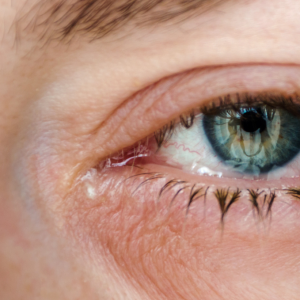Pruritus scroti, commonly known as scrotal itching, is a condition that has increasingly become a menace among growing boys. Did you know that the scrotum, the pouch of skin that houses the testicles, is particularly susceptible to irritation and persistent itching due to this condition? The incidence of pruritus scroti in men of reproductive age is on the rise for a number of reasons. We will explain everything you need to know to deal with this horrible, unwelcome, and often inevitable embarrassment in this blog.
What is Pruritus scroti?
Pruritus scroti, or Itching in the scrotum, is a frequent medical ailment found in growing boys of all ages. Many times, boys are seen fidgeting or scratching their scrotum over their pants unknowingly in public places Infections, systemic inflammatory diseases, worm infestations, allergies, and tumors are all potential causes of this dreadful menace. Crotch infections, rashes, and yeast overgrowth are common due to the area’s warmth and humidity. In addition to scrotal eczema, jock itch (also known as tinea cruris), allergic reactions, and STIs, many men experience scrotal irritation due to the aforementioned conditions.

Firstly, hormonal changes during puberty play a significant role in the development of this condition. As boys go through puberty, their bodies undergo a surge in hormone production, including testosterone. These hormonal fluctuations can lead to increased sweat production and oil secretion in the genital area, creating a warm and moist environment that encourages the growth of fungi and bacteria. The resultant fungal or bacterial infections can cause intense itching and irritation on the scrotal skin.
Secondly, personal hygiene practices may also contribute to the spread and persistence of pruritus scroti. Adolescents are often less diligent about maintaining proper hygiene, which can lead to the accumulation of sweat, dirt, and dead skin cells on the scrotum. Poor hygiene habits can create an ideal breeding ground for microorganisms, exacerbating itching and discomfort.
Thirdly, the use of tight-fitting clothing and synthetic materials has become increasingly prevalent among young boys. Wearing tight underwear or clothing made from non-breathable fabrics can trap moisture and heat around the scrotal area, promoting fungal growth and irritating the skin. Additionally, frequent friction between the scrotal skin and clothing can further worsen the condition, leading to persistent itching and soreness.
Moreover, the rise of sedentary lifestyles and increased screen time among young boys can indirectly contribute to pruritus scroti. Spending prolonged hours sitting or engaging in activities that limit airflow to the genital area can exacerbate sweating and create an environment conducive to fungal or bacterial infections.
Furthermore, the stigma associated with discussing genital health issues might deter some boys from seeking timely medical attention. They may feel embarrassed or shy to discuss their symptoms with parents or healthcare providers, leading to delays in diagnosis and treatment.
Causes of Pruritus Scroti
Pruritus scroti, or scrotal itching, can have several underlying causes, but the most common culprits are fungal and bacterial infections, contact dermatitis, and poor personal hygiene practices.
Fungal and bacterial infections:
In warm and moist environments, such as the genital area, fungi like Candida (yeast) and bacteria can thrive, leading to infections. The scrotal skin provides an ideal environment for these microorganisms to multiply, causing redness, itching, and sometimes a characteristic cottage cheese-like discharge. Though not common nevertheless the outer skin of your scrotum maybe become a bit sticky as well.
Contact dermatitis:
This condition occurs when the scrotal skin comes into contact with irritants or allergens, leading to an inflammatory response. Common irritants may include harsh soaps, detergents, fragrances, or certain fabrics used in underwear or clothing. Contact dermatitis can cause itching, redness, and swelling on the scrotum.
Poor personal hygiene:
Inadequate hygiene practices, such as infrequent washing or improper drying of the genital area, can allow sweat, dead skin cells, and other debris to accumulate. This creates an environment where bacteria and fungi can flourish, leading to itching and discomfort.
Warm and humid climate:
While pruritus scroti can occur in any climate, it is more commonly found in regions with warm and humid conditions. High temperatures and increased humidity provide an environment that fosters the growth of microorganisms. In such climates, boys may experience more sweating in the scrotal area, which can exacerbate the risk of infection and irritation.

To address the menace of pruritus scroti in growing boys, it is crucial to raise awareness about this condition and promote proper hygiene practices. Encouraging open conversations about genital health and providing education on personal hygiene can empower boys to take proactive measures. Additionally, choosing loose-fitting, breathable clothing made from natural fabrics can help reduce moisture and friction in the scrotal area. Timely medical evaluation and treatment by healthcare professionals are essential to identifying the root cause of the itching and providing appropriate therapies to alleviate discomfort and prevent further complications.
Most affected Age groups
As for the age group most affected by pruritus scroti, it is most prevalent in growing boys who are going through puberty. This age group, typically between the ages of 10 and 18, experiences significant hormonal changes during puberty. These hormonal shifts lead to increased sweat production and oil secretion, creating an environment conducive to infections. However, it has been found that due to unhygienic or very humid conditions, jock itch is prevalent up to the age of 60 or even more.
It is probable that growing boys are more prone to scrotal itching due to the fact that they pay less attention to personal cleanliness as they have a crazy rush towards their dream sport, forgetting the hygiene element and often sacrificing personal hygiene in the process. When practicing sports like football and other outdoor games, excessive perspiration in the private parts is a typical problem, especially among young men.
Additionally, as adolescents become more active and engage in sports or physical activities, they may sweat more, creating an environment favorable for the development of pruritus scroti.
Moreover, at this age, boys may start experimenting with various clothing styles, including tight-fitting garments, which can exacerbate the condition by trapping moisture and limiting airflow to the scrotal area. Timely medical evaluation and adopting proper hygiene habits can help alleviate and prevent pruritus scroti in this age group.
Effects of Hormonal Changes on the Development of pruritus scroti
Pruritus scroti, or scrotal itching, can occur due to various factors, and hormonal changes are not typically a direct cause of this condition. However, hormonal changes during puberty can indirectly contribute to the development of pruritus scroti by affecting other factors that promote its occurrence.
During puberty, hormonal fluctuations, particularly an increase in testosterone production, can lead to changes in the skin’s oil production and sweat secretion. This can create a warm and moist environment in the genital area, which may facilitate the growth of fungi and bacteria. These microorganisms can cause fungal or bacterial infections, leading to itching, redness, and discomfort on the scrotal skin.
While hormonal changes may not be the primary cause of pruritus scroti, they can be a contributing factor by influencing the skin’s physiology and creating conditions that promote infection.
Side effects of medications on the development of pruritus scroti
Additionally, some medications can have side effects, including itching and skin irritation, potentially affecting the scrotal area. For example, certain medications like antifungals, antibiotics, or topical creams used for other skin conditions might cause skin reactions or allergic responses, leading to itching and discomfort in the scrotum.
It’s important to keep in mind that rather than being a direct result of hormonal changes or medications, pruritus scroti is more frequently linked to things like fungal or bacterial infections, poor personal hygiene habits, contact dermatitis, or wearing tight, non-breathable clothing.
If a person experiences persistent or bothersome scrotal itching, it’s essential to seek medical evaluation to determine the underlying cause and receive appropriate treatment. A healthcare provider can help diagnose the condition accurately and recommend suitable remedies, including topical creams, antifungal medications, or adjustments to personal hygiene practices, depending on the cause of the pruritus scroti.
Signs and symptoms of pruritus scroti
Pruritus scroti presents with a range of signs and symptoms that can cause discomfort and distress to individuals affected by the condition. The primary hallmark of pruritus scroti is persistent itching in the scrotal area, the pouch of skin that encloses the testes. Redness and inflammation of the scrotal skin are two additional symptoms that may accompany this itching, which can range in intensity from mild to severe.
As the itching progresses, individuals may experience a strong urge to scratch the affected area, which can further exacerbate the irritation and may even lead to skin abrasions or breaks in the skin’s surface. In some cases, the scrotal skin may appear dry and flaky due to excessive scratching and irritation. Furthermore, pruritus scroti can also be associated with a burning sensation or discomfort in the genital region, making it challenging for individuals to find relief.
Depending on the underlying cause of pruritus scroti, additional symptoms may be present. For instance, if the itching is due to a fungal infection, there may be a characteristic cottage cheese-like discharge or an unpleasant odor from the affected area. In cases where contact dermatitis is the cause, the itching and redness may be more prominent on the parts of the scrotal skin that came into contact with the irritant.
While pruritus scroti itself is not typically a serious medical condition, the persistent itching and discomfort can significantly impact an individual’s quality of life, leading to sleep disturbances, mood changes, and feelings of embarrassment or self-consciousness. If left untreated or if the underlying cause is not addressed, pruritus scroti can persist or worsen, potentially leading to complications such as secondary skin infections.
Given the potential impact on daily life and overall well-being, individuals experiencing scrotal itching or related symptoms should seek medical evaluation. A healthcare professional can accurately diagnose the underlying cause of pruritus scroti and recommend appropriate treatment, which may include topical creams, antifungal medications, or adjustments to personal hygiene practices. Early intervention can improve the comfort and health of those who are suffering from this condition by reducing symptoms and preventing complications, and other issues.

Do people staying nude less prone to pruritus scroti
The observation that there are very few cases of pruritus scroti among people who stay in the nude can be attributed to several factors related to personal hygiene, clothing choices, and the impact of clothing on the genital area. While staying nude may not be practical or culturally acceptable for everyone, the following factors may explain the reduced incidence of pruritus scroti in those who practice nudity:
Improved Ventilation:
Clothing, especially tight-fitting or non-breathable fabrics, can trap moisture and heat around the genital area, creating an environment conducive to fungal and bacterial growth. By staying nude, individuals allow for better ventilation and airflow, which helps keep the genital area dry and less susceptible to infections.
Reduced Friction:
Clothing can cause friction on the skin, leading to irritation and discomfort, especially in sensitive areas like the scrotum. By avoiding clothing, individuals eliminate this potential source of irritation, which can reduce the likelihood of pruritus scroti.
Enhanced Personal Hygiene:
People who choose to stay nude may develop a heightened sense of personal hygiene since they have direct contact with their bodies. Regular cleaning of the genital area can prevent the buildup of sweat, dead skin cells, and other debris, minimizing the risk of infections that may cause scrotal itching.
Limited Use of Irritants:
Certain fabrics, detergents, or laundry products used in clothing can act as irritants to the skin, leading to contact dermatitis and itching. By staying nude, individuals reduce their exposure to these potential irritants, further reducing the risk of pruritus scroti.
Avoidance of Synthetic Materials:
Many clothing materials, particularly synthetic fabrics, do not allow the skin to breathe and can exacerbate skin irritation. People who stay nude avoid wearing such materials altogether, thus reducing the risk of developing scrotal itching.
Body Acceptance and Reduced Stress:
Choosing to stay nude may foster body acceptance and self-confidence, leading to reduced stress and anxiety. Stress has been linked to exacerbating certain skin conditions, and by promoting overall well-being, individuals may experience fewer instances of pruritus scroti.
While staying nude might be associated with a reduced risk of pruritus scroti, it is essential to consider that other factors, such as overall personal hygiene practices and lifestyle choices, also play crucial roles in the development of this condition. Not everyone may find staying nude practical or comfortable, and cultural norms and social settings may not allow for such practices in all situations.
For those who cannot or choose not to stay nude, maintaining proper hygiene, wearing loose-fitting and breathable clothing, and avoiding irritants remain essential measures to prevent pruritus scroti. If individuals experience persistent scrotal itching or discomfort, seeking medical advice is crucial to identifying the underlying cause and receiving appropriate treatment.
Conclusion:
Pruritus scroti, or scrotal itching, is a common yet bothersome condition that primarily affects growing boys and young men. The itching, discomfort, and potential embarrassment associated with this condition can significantly impact an individual’s quality of life. While hormonal changes during puberty may indirectly contribute to the development of pruritus scroti, the primary underlying causes are fungal and bacterial infections, contact dermatitis, and poor personal hygiene practices.
Preventing and managing pruritus Scroti involves a combination of measures. Maintaining proper personal hygiene, including regular cleansing and thorough drying of the scrotal area, is essential to reducing the risk of infection and irritation. Choosing loose-fitting and breathable clothing made from natural fabrics can help prevent excess moisture and friction in the genital region. Avoiding irritants and allergens in detergents, soaps, and clothing materials can also play a role in mitigating the risk of contact dermatitis.
For those experiencing persistent or severe scrotal itching, seeking medical evaluation is crucial to identifying the specific cause are receiving appropriate treatment. Healthcare professionals can offer targeted therapies, such as antifungal medications or topical creams, tailored to address the underlying condition and alleviate symptoms effectively.

Though staying nude has been observed to reduce the incidence of pruritus scroti in some cases due to improved ventilation and reduced friction, this practice may not be suitable for everyone due to cultural norms and personal preferences. Nevertheless, adopting good personal hygiene habits, making informed clothing choices, and seeking prompt medical attention when necessary are essential steps in managing pruritus scroti and ensuring comfortable and healthy genital health.
Overall, we can work to lessen the effects of pruritus scroti and improve the well-being of those who are suffering from this condition by raising awareness, encouraging open conversations about genital health, and taking preventive measures.
Disclaimer:
The author’s views are his or her own. The facts and opinions in the article have been taken from various articles and commentaries available in the online media and Eastside Writers does not take any responsibility or obligation for them.
Note: Contact our Writers at www.eastsidewriters.com for writing Blogs/Articles on any niche. We have experts in various domains from Technology to Finance and from Spirituality to Lifestyle and Entertainment.






